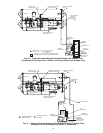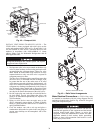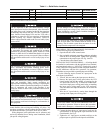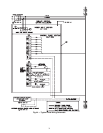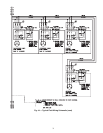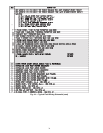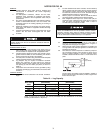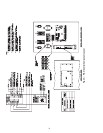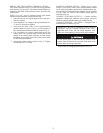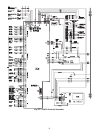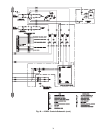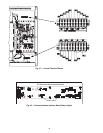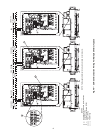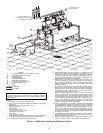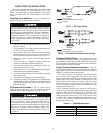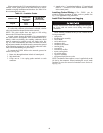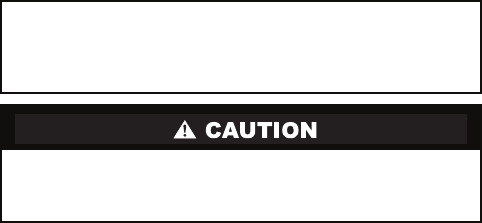
37
WIRING THE FIELD WIRING TERMINAL STRIPS —
This section describes how to wire the field wiring terminal
strips shown in Fig. 46 and 47. The control terminal blocks are
mounted to the inside of the enclosure, above and below the
control panel.
NOTE: Up to 30 v may be measured across open contact
terminals on the hazardous voltage terminal strip.
1. Turn off, lock out, and tag the input power to the drive.
Wait five minutes.
2. Verify that there is no voltage at the input terminals (L1,
L2, and L3) of the power module.
3. Verify that the status LEDs on the Communications
Interface Board are not lit. See Fig. 48. The location of
the Communications Interface Board is shown in Fig. 6.
4. Use a screwdriver to remove conduit twist outs in the
control panel. Do not punch holes or drill into the top
surface of the control center enclosure for field wiring.
Knockouts are provided in the back of the control center
for field wiring connections.
5. Connect the control wiring as shown in Fig. 47. Tighten
all connections to 7 to 9 in-lb.
CONNECT CONTROL INPUTS — Wiring may be speci-
fied for a spare safety switch, and a remote start/stop contact
can be wired to the starter terminal strip. Additional spare sen-
sors and Carrier Comfort Network® modules may be specified
as well. These are wired to the machine control panel as
indicated in Fig. 49.
CONNECT CONTROL OUTPUTS — Connect auxiliary
equipment, chilled and condenser water pumps, and spare
alarms as required and indicated on job wiring drawings.
CONNECT STARTER — The 23XRV is equipped with a
unit-mounted VFD starter (Fig. 50).
Remove the VFD shipping bracket shown in Fig. 16.
IMPORTANT: Be sure to ground the power circuit in
accordance with the National Electrical Code (NEC),
applicable local codes, and job wiring diagrams. Also,
make sure correct phasing is observed for proper rotation.
Do not punch holes or drill into the top surface of the
control center. Knockouts are provided in the back of the
control center for wiring connections.



